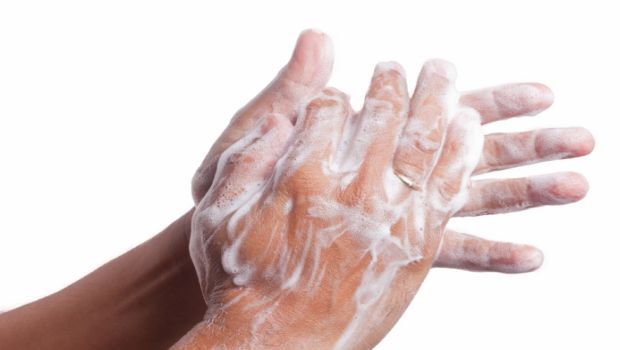Hand Hygiene Can Lower Mortality, Antibiotic Prescription Rates in Nursing Homes
Infection prevention practices centered on hand hygiene protocols can save lives across all healthcare facilities, not just hospital settings.

Infection prevention practices centered on hand hygiene (HH) protocols can save lives across all healthcare facilities, not just hospital settings. This includes nursing homes, according to a new study published in the February issue of the American Journal of Infection Control.
Researchers reviewed the impact of implementing a multi-component HH program among nursing homes (NH). They found that incorporating consistent measures that prompt staff, residents and visitors to wash hands can lower mortality and antibiotic prescription rates, and increase overall hand cleaner use. This study is among the first to assess HH practices outside of the hospital setting through a randomized controlled trial.
From April 1, 2014 through April 1, 2015, the study assessed 26 French NHs, randomly assigning 13 to an intervention group and 13 to a control group. The HH program, which targeted NH staff, residents, visitors and outside care providers, included facilitated access to hand-rub solution using pocket-sized containers and new dispensers; a campaign to promote HH with posters and event organization; and forming local work groups in each NH to focus on HH guidelines and staff education. Staff were given online quizzes at the program’s culmination; those who did not score high enough were invited to redo the education portion at a later date.
“Hand hygiene protocols have traditionally focused on acute care settings. Our study is changing this narrative, underscoring that we can take a proven intervention practice and make it work outside of the hospital space, by specifically adapting it to long-term settings,” said Laura Temime, the study’s lead author and a professor at the Conservatoire National des Arts et Métiers.
Among the results:
• The intervention group that incorporated HH measures reported lower mortality (2.10 in the intervention group vs. 2.65 in the control group, per 100 residents per month) and antibiotic prescription rates (5.0 v. 5.8 daily doses per 100 resident days). Notably, researchers recorded a 30 percent lower mortality rate in the intervention group in January-March 2015, during which France recorded a large influenza epidemic that most impacted older adults. This underlines the importance of increased HH compliance during epidemic periods.
• The mean quantity of hand-rub consumption was higher in the intervention group by the study’s end (7.9 mL per resident per day in the intervention group vs. 5.7 mL per resident per day in the control group). As reference, the two quarters prior to implementation recorded an equal hand-rub consumption between the control and intervention groups (4.5 mL per resident per day).
• Antibiotic prescriptions decreased during spring and summer and increased in winter for both groups. Moreover, both groups recorded an uptick in prescriptions from January-March 2015, during the influenza epidemic.
• Of note, while the study resulted in a lower mortality rate among the intervention NHs, the study leads flagged that the impact was not sustained after the HH intervention ended (2.53 deaths per 100 residents in the last three months of the study, as compared to 2.87 deaths per 100 residents in the three months after the study concluded). Researchers explained that this could stem from the harvesting effect of winter epidemics, like the flu, that occurred in the control NHs but was in part prevented in the intervention group.
• It took 3-6 months for results of the HH intervention to begin emerging, a timeframe calculated based on the online quizzes and communication between participants and the nurse who led the training.
“This research demonstrates that a sustained educational program focused on hand hygiene can improve practices and may reduce the risk of infection among nursing home patients,” said 2018 APIC president Janet Haas, PhD, RN, CIC, FSHEA, FAPIC. “It is crucial that we increase efforts to bolster infection prevention programs in nursing homes because residents of these facilities have more underlying health conditions and are more vulnerable to serious complications from infections.”
Nursing homes are known sites of infection prevalence. In the U.S. alone, NHs will report some 3 million infections per year, accounting for the largest share of NH mortality and up to $1 billion in added annual healthcare costs. The death rate due to infections in NHs is estimated at 0.6 per 1,000 resident days.
Globally, compliance with HH recommendations remains low among NH staff-tallying in at 14.7 percent in Canada, 17.0 percent in Italy and 11.3 percent in Taiwan.
Reference: Temime L, et al. Impact of a multicomponent hand hygiene-related intervention on the infectious risk in nursing homes: A cluster randomized trial. American Journal of Infection Control, Volume 46, Issue 2 (February 2018).
Source: Association for Professionals in Infection Control and Epidemiology (APIC)
Infections Do Not Recognize International Borders: The Potential Impact of US Withdrawal From WHO
January 21st 2025The US withdrawal from WHO jeopardizes infection prevention, research funding, and global collaboration, disproportionately impacting low-income nations reliant on WHO support for equitable health care advancements.
Revolutionizing Infection Prevention: How Fewer Hand Hygiene Observations Can Boost Patient Safety
December 23rd 2024Discover how reducing hand hygiene observations from 200 to 50 per unit monthly can optimize infection preventionists' time, enhance safety culture, and improve patient outcomes.
Tackling Health Care-Associated Infections: SHEA’s Bold 10-Year Research Plan to Save Lives
December 12th 2024Discover SHEA's visionary 10-year plan to reduce HAIs by advancing infection prevention strategies, understanding transmission, and improving diagnostic practices for better patient outcomes.
Point-of-Care Engagement in Long-Term Care Decreasing Infections
November 26th 2024Get Well’s digital patient engagement platform decreases hospital-acquired infection rates by 31%, improves patient education, and fosters involvement in personalized care plans through real-time interaction tools.